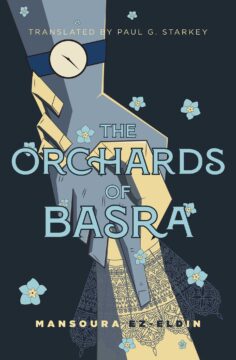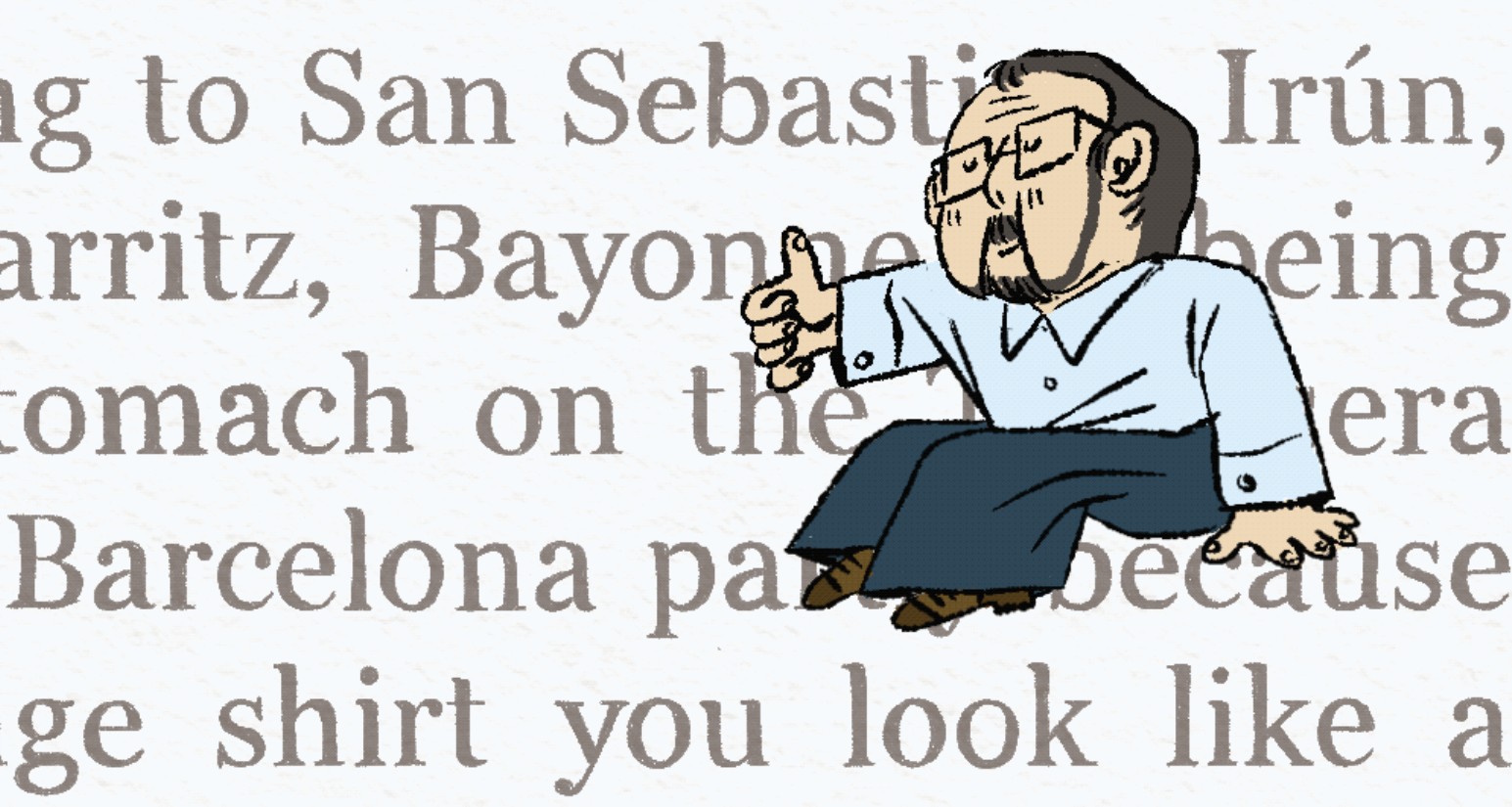Michael Prodger at The New Statesman:
 If image-making is what drives him still, the possibilities of technology are also an ongoing fascination. He is one of the great draughtsmen of the 20th century but has long been happy to lay aside his pencil to tinker with art made by whatever new toy came into view – Polaroid collages, photocopiers, fax machines, multiple high-res camera rigs, and his iPad (with Apple even devising bespoke software for him). Hockney is a proselytiser, claiming that artists through history have always made use of emerging technologies. While these tools may have helped him scratch his itch, they are to many viewers a distraction and have sidetracked him from his greatest strengths. The artist, who has been heavily involved in putting together the Paris exhibition, has included a selection of these diversions: they clearly remain important to him.
If image-making is what drives him still, the possibilities of technology are also an ongoing fascination. He is one of the great draughtsmen of the 20th century but has long been happy to lay aside his pencil to tinker with art made by whatever new toy came into view – Polaroid collages, photocopiers, fax machines, multiple high-res camera rigs, and his iPad (with Apple even devising bespoke software for him). Hockney is a proselytiser, claiming that artists through history have always made use of emerging technologies. While these tools may have helped him scratch his itch, they are to many viewers a distraction and have sidetracked him from his greatest strengths. The artist, who has been heavily involved in putting together the Paris exhibition, has included a selection of these diversions: they clearly remain important to him.
Indeed, Hockney’s curatorial role extends to the colour of the gallery walls and the illuminated pink mantra on the outside of the building: “Do remember they can’t cancel the spring.”
more here.
Enjoying the content on 3QD? Help keep us going by donating now.

 A chronicler of the chimeric, the Egyptian writer Mansoura Ez Eldin has been celebrated in the Arab world for her feverish, fanciful plots. To read her feels like opening one’s eyes into a fugue state, a landscape in which the parameters of reality seem just slightly off-kilter. The air, in her universe, is always abuzz with ethereal presences and diaphanous bodies, anticipating the propitious moment for revelation. For someone so tuned to the monstrous and the ghostly, it’s unsurprising that Ez Eldin’s range of references encompasses everything from Arab-Islamic folklore and A Thousand and One Nights to Franz Kafka and Italo Calvino. Born in the Nile Delta and trained as a journalist, she now works as an editor at the cultural weekly Akhbar al-Adab—a background that has perhaps primed her for the dizzying hall-of-mirror densities of intertextual allusion that characterize her inventive oeuvre.
A chronicler of the chimeric, the Egyptian writer Mansoura Ez Eldin has been celebrated in the Arab world for her feverish, fanciful plots. To read her feels like opening one’s eyes into a fugue state, a landscape in which the parameters of reality seem just slightly off-kilter. The air, in her universe, is always abuzz with ethereal presences and diaphanous bodies, anticipating the propitious moment for revelation. For someone so tuned to the monstrous and the ghostly, it’s unsurprising that Ez Eldin’s range of references encompasses everything from Arab-Islamic folklore and A Thousand and One Nights to Franz Kafka and Italo Calvino. Born in the Nile Delta and trained as a journalist, she now works as an editor at the cultural weekly Akhbar al-Adab—a background that has perhaps primed her for the dizzying hall-of-mirror densities of intertextual allusion that characterize her inventive oeuvre. Language isn’t always necessary. While it certainly helps in getting across certain ideas, some neuroscientists have argued that many forms of human thought and reasoning don’t require the medium of words and grammar. Sometimes, the argument goes, having to turn ideas into language actually slows down the thought process.
Language isn’t always necessary. While it certainly helps in getting across certain ideas, some neuroscientists have argued that many forms of human thought and reasoning don’t require the medium of words and grammar. Sometimes, the argument goes, having to turn ideas into language actually slows down the thought process. Larry Summers: No, I’m feeling like I’m part of some kind of Kafkaesque economic tragedy. I think the master narrative, the big picture here, Yascha, is that the United States is turning itself into an emerging or a submerging market. There are set patterns that we associate with mature democracies. There are set patterns that we associate with developing countries, for which some people would use the term “banana republic.”
Larry Summers: No, I’m feeling like I’m part of some kind of Kafkaesque economic tragedy. I think the master narrative, the big picture here, Yascha, is that the United States is turning itself into an emerging or a submerging market. There are set patterns that we associate with mature democracies. There are set patterns that we associate with developing countries, for which some people would use the term “banana republic.” Pope Francis, who rose from modest means in Argentina to become the first Jesuit and Latin American pontiff, who clashed bitterly with traditionalists in his push for a more inclusive Roman Catholic Church, and who spoke out tirelessly for migrants, the marginalized and the health of the planet, died on Monday at the Vatican’s Casa Santa Marta. He was 88. The pope’s death was announced by the Vatican in
Pope Francis, who rose from modest means in Argentina to become the first Jesuit and Latin American pontiff, who clashed bitterly with traditionalists in his push for a more inclusive Roman Catholic Church, and who spoke out tirelessly for migrants, the marginalized and the health of the planet, died on Monday at the Vatican’s Casa Santa Marta. He was 88. The pope’s death was announced by the Vatican in  The world is a mess.
The world is a mess. Scientists just unveiled the world’s tiniest pacemaker. Smaller than a grain of rice and controlled by light shone through the skin, the pacemaker generates power and squeezes the heart’s muscles after injection through a stint. The device showed it could steadily orchestrate healthy heart rhythms in rat, dog, and human hearts in a
Scientists just unveiled the world’s tiniest pacemaker. Smaller than a grain of rice and controlled by light shone through the skin, the pacemaker generates power and squeezes the heart’s muscles after injection through a stint. The device showed it could steadily orchestrate healthy heart rhythms in rat, dog, and human hearts in a  Yesterday on Warren Street, Richard and I bumped into our friend Jake. If you are recognized on Warren Street, it answers many questions for the rest of the day. I said to Jake, “I love you.” I said, “Richard and I both love you.” Jake owns a shop and sees you in the way Godot would see you if he ever showed up. No one on Warren Street is waiting for Godot. If anything, we are waiting for Godot to leave. Jake said he had bottles of scented oil and he would give me some. It’s one of those offers You have to weigh to yourself, if you are going to remind him. People can be more generous than they bargain for.
Yesterday on Warren Street, Richard and I bumped into our friend Jake. If you are recognized on Warren Street, it answers many questions for the rest of the day. I said to Jake, “I love you.” I said, “Richard and I both love you.” Jake owns a shop and sees you in the way Godot would see you if he ever showed up. No one on Warren Street is waiting for Godot. If anything, we are waiting for Godot to leave. Jake said he had bottles of scented oil and he would give me some. It’s one of those offers You have to weigh to yourself, if you are going to remind him. People can be more generous than they bargain for. I
I For 23 years, A.O. Scott was a film critic for the New York Times. For the past five months, he has been the nation’s most prominent poetry critic, writing a monthly column that uses the Times’ interactive technology to analyze a single poem at a time. Scott isn’t coming to poetry as a true outsider. He finished all the coursework and exams for a Ph.D. in literature, and he was a literary critic before he started writing about movies. But when most writing about poetry is done by poets and lifelong academics, many of whom seem to view other poets and academics as their primary audience, that still makes Scott an unusual and welcome presence.
For 23 years, A.O. Scott was a film critic for the New York Times. For the past five months, he has been the nation’s most prominent poetry critic, writing a monthly column that uses the Times’ interactive technology to analyze a single poem at a time. Scott isn’t coming to poetry as a true outsider. He finished all the coursework and exams for a Ph.D. in literature, and he was a literary critic before he started writing about movies. But when most writing about poetry is done by poets and lifelong academics, many of whom seem to view other poets and academics as their primary audience, that still makes Scott an unusual and welcome presence.